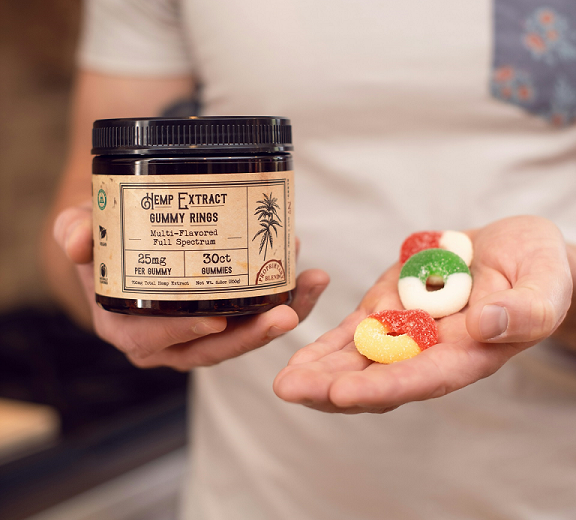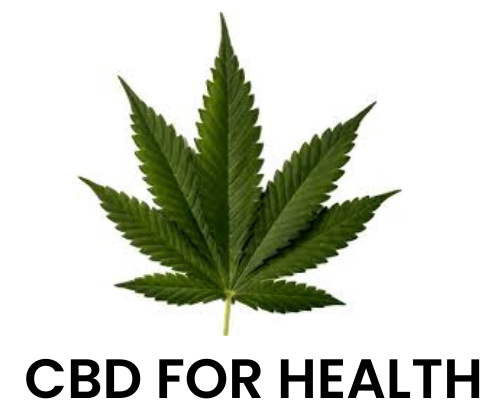
In recent years, CBD products have gained immense popularity due to their potential health benefits. From oils and capsules to topicals and edibles, there are various forms of CBD available in the market. Of these, CBD gummies have become a fan favorite because they offer a convenient and tasty way to consume CBD. However, with the plethora of products flooding the market, it can be overwhelming for consumers to understand the potency of CBD gummies and decipher the information on their labels.
In this blog post, we will explore how to read product labels and understand the potency of CBD gummies. Whether you are a novice or an experienced user, this guide will help you make informed decisions when purchasing and consuming CBD gummies.
What is CBD?
Before we dive into understanding the potency of CBD gummies, let’s first understand what CBD actually is. CBD, short for cannabidiol, is a compound found in the cannabis plant. It is one of the many cannabinoids present in the plant, with another well-known cannabinoid being THC (tetrahydrocannabinol). Unlike THC, CBD is non-psychoactive, meaning it does not produce a “high” feeling in users.
CBD is known for its potential therapeutic effects, such as reducing anxiety, managing pain and inflammation, and improving sleep. It interacts with the body’s endocannabinoid system (ECS), which plays a vital role in regulating various bodily functions like mood, pain sensation, and immune response.
Understanding CBD Potency:
The potency of a CBD product refers to the concentration or strength of CBD it contains. It is usually expressed in milligrams (mg) or as a percentage on the product label. The potency of a CBD product determines its effectiveness, dosage, and overall quality.
When it comes to CBD gummies, understanding the potency is crucial as it directly affects how much CBD you are consuming with each gummy. A low-potency gummy may not produce the desired effects, while a high-potency one may cause adverse reactions.
Reading Product Labels:
Now that we have a basic understanding of CBD potency let’s move on to deciphering product labels. Most CBD gummies come in a package with a label that contains important information. Here’s what you need to look for when reading product labels:
Serving size: The serving size refers to the recommended amount of gummies to consume per serving. This information is essential as it helps you determine your daily dosage.
Total CBD content: This indicates the total amount of CBD present in the package. It is usually expressed in mg or as a percentage.
CBD per gummy:
This tells you how much CBD each gummy contains. It is calculated by dividing the total CBD content by the number of gummies in the package.
Other ingredients: Along with CBD, gummies also contain other ingredients to give them their shape, color, and flavor. Make sure to check the ingredient list for any potential allergens or additives.
Third-party lab testing: Reputable CBD companies often get their products tested by third-party labs for potency, purity, and safety. Look for a QR code or link on the label that you can scan or visit to view the lab results.
Decoding Potency Labels:
Now that you know what to look for on a product label, let’s understand how to decipher potency labels. As mentioned earlier, CBD potency is expressed in mg or as a percentage. Here’s an example:
Total CBD: 300mg
CBD per gummy: 10mg (30 gummies per package)
In this case, each gummy contains 10mg of CBD, which makes it a low-potency product. If you are new to CBD, this may be a good starting point.
Some products may have potency labels in percentages instead of mg. Here’s an example:
Total CBD: 25%
CBD per gummy: 12.5mg (20 gummies per package)
In this case, each gummy contains 12.5mg of CBD, and the total CBD content in the package is 25%. This is considered a medium-potency product and may be suitable for those with some experience using CBD.
Higher-potency products can range anywhere from 30mg to even 100mg per gummy. These are usually recommended for experienced users or those looking for a higher dosage of CBD.
Factors Affecting Potency:
It’s essential to note that the potency of a CBD product can be affected by various factors. These include the quality of the hemp plant, extraction method, and manufacturing process. Reputable companies use high-quality hemp plants grown organically and employ CO2 extraction methods to ensure purity and potency. They also have strict quality control measures in place to maintain the consistency and effectiveness of their products.
Finding the Right Potency for You:
Finding the right potency for your needs may require some trial and error. It’s best to start with a low-potency product, especially if you are new to CBD gummies. Start with one gummy per serving and gradually increase the dosage until you achieve your desired effects. Remember to consult with a healthcare professional before adding CBD to your routine, especially if you are currently taking any medications.
Conclusion:
We hope this blog post has provided valuable insights into reading product labels and understanding the potency of CBD gummies. By knowing how to decipher potency labels, you can make informed decisions when purchasing CBD gummies and ensure you are consuming the right amount of CBD for your needs. Remember to always choose reputable companies that provide third-party lab testing results, and consult with a healthcare professional if needed. Happy snacking!
For those interested in incorporating CBD into their wellness routine, reading product labels and understanding potency is crucial. By understanding the potency of CBD gummies, you can make informed decisions and ensure you are consuming the right amount of CBD for your needs. Remember to always choose reputable companies that provide third-party lab testing results, and consult with a healthcare professional if needed. With the growing popularity of CBD products, it’s important to prioritize safety and effectiveness when purchasing and consuming them. We hope this blog post has provided valuable insights into the world of CBD potency and will help you make the best choices for your wellness journey. Happy snacking!
References:
“What is Cannabidiol (CBD)?”, Harvard Health Publishing, https://www.health.harvard.edu/blog/cannabidiol-cbd-what-we-know-and-what-we-dont-2018082414476“How to Read CBD Oil Labels”, Ministry of Hemp, https://ministryofhemp.com/blog/how-to-read-cbd-oil-label/
“CBD Dosage: How Much Should You Take?”, Healthline, https://www.healthline.com/health/cbd-dosage#how-much-cbd-shoud-you-take-
“Why Third-Party CBD Lab Testing is Important”, Leafly, https://www.leafly.com/news/cannabis-101/why-third-party-cbd-lab-testing-is-important
“CBD Dosage Guide: How Much Should You Take?”, Verywell Health, https://www.verywellhealth.com/cbd-dosage-guide-4172215 End of Document
Additional Resources
“The Endocannabinoid System: A Beginner’s Guide”, Healthline, https://www.healthline.com/health/endocannabinoid-system
“CBD vs THC: What’s the Difference?”, Medical News Today, https://www.medicalnewstoday.com/articles/cbd-vs-thc#differences-in-effects
